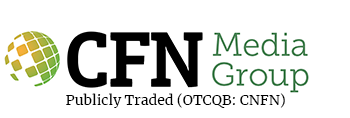Many natural resource companies focus on raw materials for tomorrow’s electric vehicles, batteries, and renewable energy resources. But few have as much potential as Slave Lake Zinc Corp. (CSE: SLZ) and its O’Connor Lake zinc-lead-silver mineralization – an extensive hydrothermal vein fault system with prior exploration.
In this article, we’ll look at what makes zinc a unique target in today’s metals market, why O’Connor Lake represents such an exciting opportunity, and why investors should consider the company now.
The Unique Market for Zinc
Zinc is critical in many industries – including renewable energy. For example, zinc coating protects solar panels and wind turbines from rust, with the average 10 MWh wind turbine requiring four tons of the metal. In addition, zinc is a typical coating that protects iron and steel from corrosion and is often used as an alloy to make bronze and brass.
Several large zinc mines have shut down over the past few years, resulting in a tightening supply. While China’s troubled property sector is depressing demand for zinc-coated galvanized steel, causing futures to move lower, European buyers are paying record premiums of over $500 per ton on top of futures prices to secure spot units amid low stocks.

Unfortunately for consumers, like most metals, there aren’t many zinc surface deposits, meaning it will be hard to increase supply. Therefore, the market could see an even more acute supply shortage when demand increases in China and elsewhere. And these dynamics could result in sharply higher zinc prices – and premiums on zinc-containing properties.
A Historic Zinc Opportunity
O’Connor Lake was discovered in 1949 and developed in the 1950s with private money and extensive research. But shortly after going into production, zinc prices collapsed and production stopped.
After exchanging hands several times, Slave Lake Zinc Corp.’s Glen MacDonald and Max Braden acquired the property in 2005 and 2006. In 2018 Rich Wigham and Jas Rai came on board to fulfill the potential of the O’Connor Property. They knew they had to expand the original 700-acre property, given the mineralization trends, and began working with indigenous communities to acquire rights to more land.
In June 2022, the company signed a “Collaboration Agreement” with the Northwest Territory Metis Nation, bringing its total land position to about 17,000 acres. These new claims cover a structural geographic corridor of more than 15 kilometers of land northwest to southeast, centered on its original lease containing the work from the 1950s.

Prior to expanding its land position, the company began airborne surveys to confirm the geophysics seen on the ground. These efforts could ultimately increase confidence in the company’s belief that its land has a significant zinc resource, update regulatory documents, and pave the way for further exploration and development work over time.
Why Investors Should Care
Slave Lake Zinc Corp. recently conducted a field program that established that the hydrothermal theses put forth by Prusti in his doctoral these of “1953-54” that the region was of hydrothermal origin and of singular age. While conducting this program a new “showing” some 5 km north west of the headframe on strike with the known mineralization was uncovered. With assays comparable to the “Head Frame” area and some higher (>20% PB at surface) follow-up will be of a high priority in the spring of 2023 also several mineral showings noted before 1952 will be followed up to confirm the geophysical anomalies it believes exist. If these findings bear out, the company could be sitting on a very attractive zinc resource – especially in today’s tight zinc market.
With a market capitalization of less than $4 million, investors can invest at a relatively attractive level, given the amount of work done. And if the company demonstrates O’Connor Lake’s feasibility, it could be in a great position to partner with a major zinc producer and private shareholders with a potentially lucrative exit.
In the near term, the company’s 2022 prospecting program could yield potential catalysts when results come through later this year or next year. Positive results could confirm the presence of zinc and increase the likelihood of a successful long-term program to establish a zinc mine.
For more information, visit the company’s website or complete the form below to download their investor presentation.










